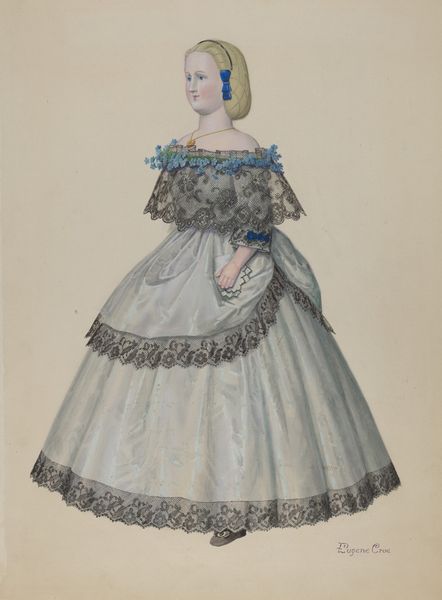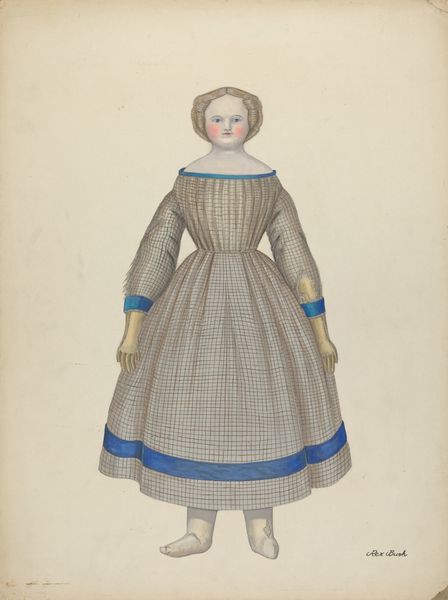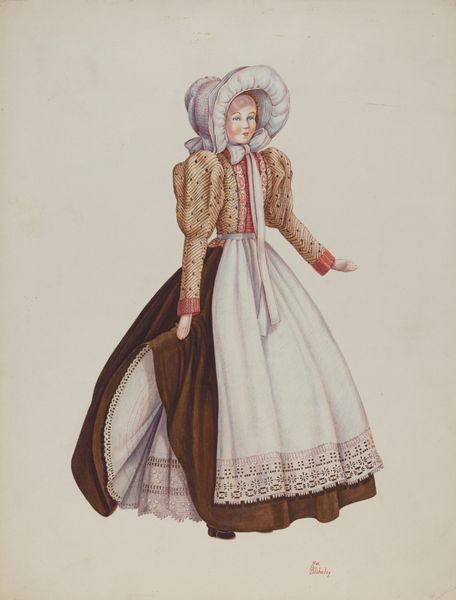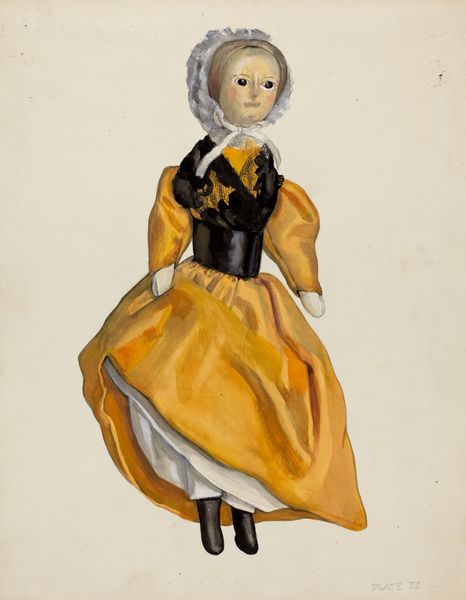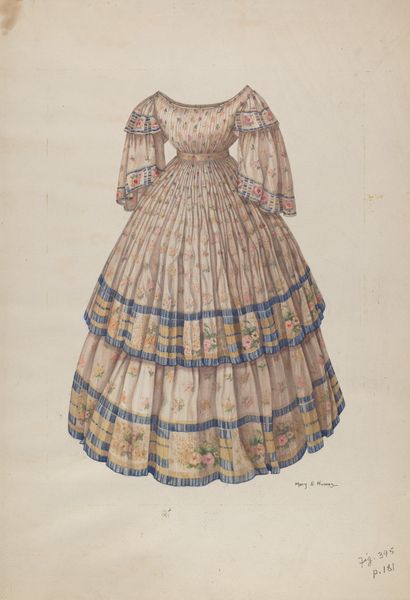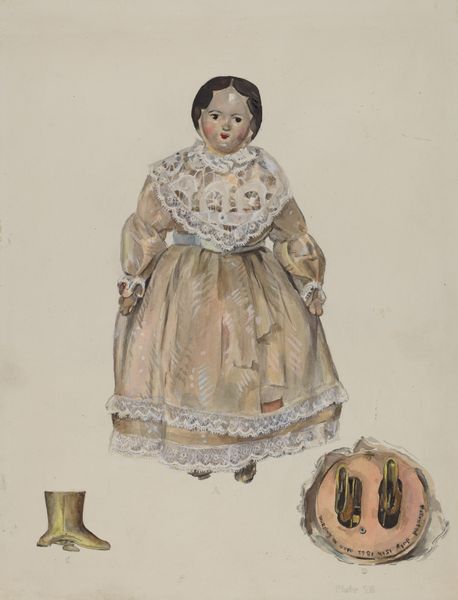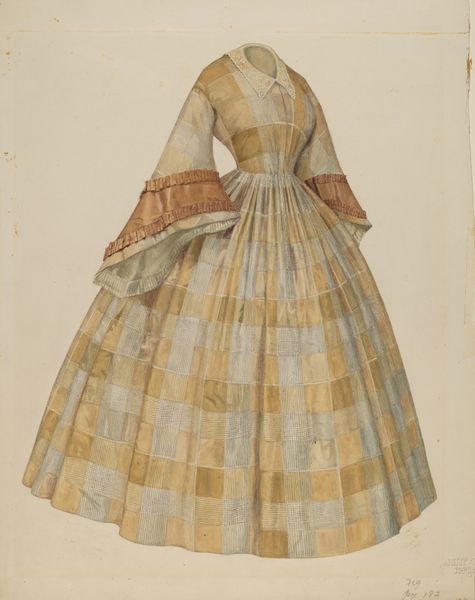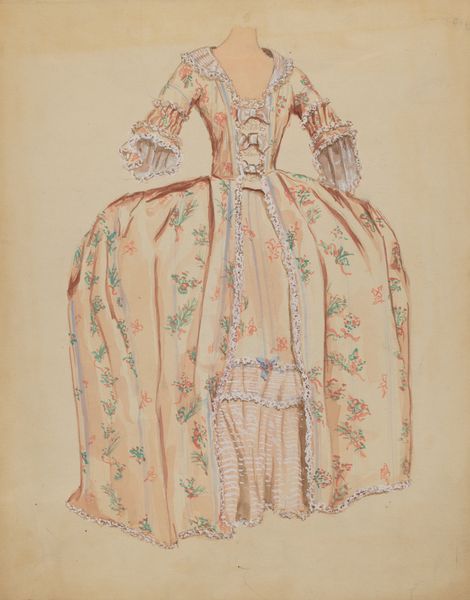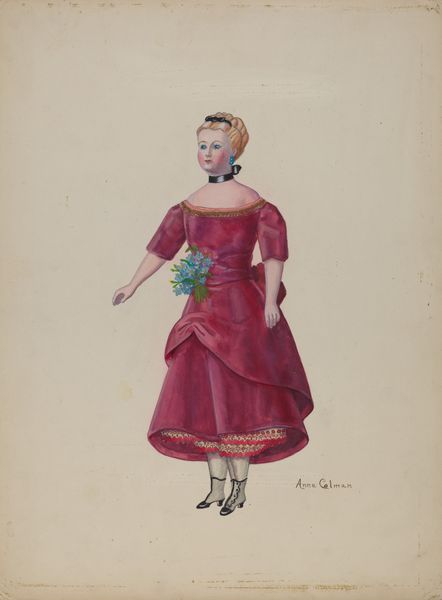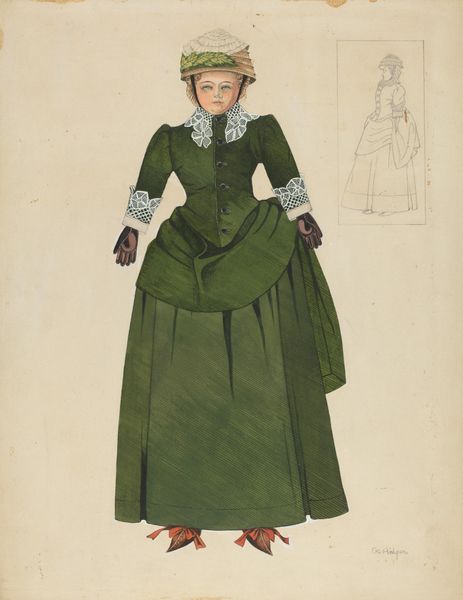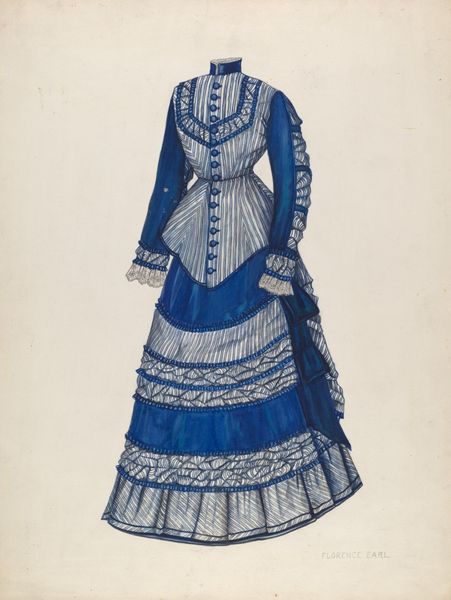
drawing, watercolor
#
portrait
#
drawing
#
watercolor
#
historical fashion
#
watercolour illustration
#
history-painting
#
academic-art
Dimensions: overall: 51 x 38.3 cm (20 1/16 x 15 1/16 in.) Original IAD Object: 24" high; 6" wide across shoulders
Copyright: National Gallery of Art: CC0 1.0
Editor: So, here we have Eugene Croe’s watercolor drawing, “Doll: Eugenia,” created around 1938. It's striking how the almost photographic depiction of the silk-like dress contrasts with the flatness of the two relief portraits in the background. What's your take on this work? Curator: What jumps out at me is the clear emphasis on materials and the means of production here. Think about the doll itself: who made it, and from what? Was it factory-produced, or handmade with specific labor? And then look at the dress. Croe is meticulously rendering the fabric. Editor: You're right. The blue seems almost unreal. Curator: Exactly! Consider the historical context. 1938… the shadow of the Depression still loomed large. Luxury goods, like silk, became potent signifiers of class and aspiration. This illustration gives attention to this production and what went into it, in all of its aspects from factory line or perhaps artisanal origins. Editor: That makes me see this in a whole new light. It's not just a pretty picture of a doll; it reflects a relationship between consumerism, labour, and desire in pre-war society. Are those portrait reliefs another layer? Curator: Absolutely. What material are they supposed to represent? Plaster? Stone? Consider the different forms of labor involved in the historical and contemporary reproduction of portraiture here. Croe highlights both artistic craftsmanship and this sort of commodity production, prompting questions about value and access. Editor: So, the choice of materials in the doll, the dress, even the depicted reliefs, opens up a whole line of inquiry into manufacturing processes and societal values. Curator: Precisely. By emphasizing materiality, Croe subtly critiques these boundaries between 'high art' portraiture and a seemingly innocuous commercial depiction. Editor: This has definitely broadened my view! Thanks! Curator: Indeed, analyzing art through this material lens offers a tangible link between art objects and their societal and industrial production.
Comments
No comments
Be the first to comment and join the conversation on the ultimate creative platform.
